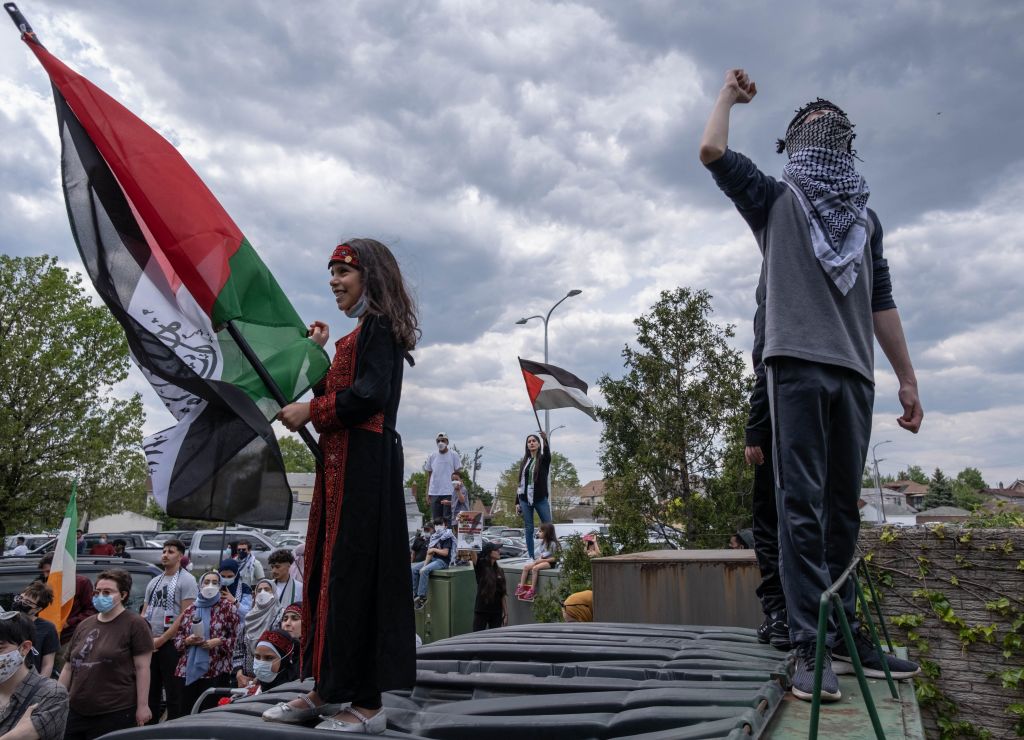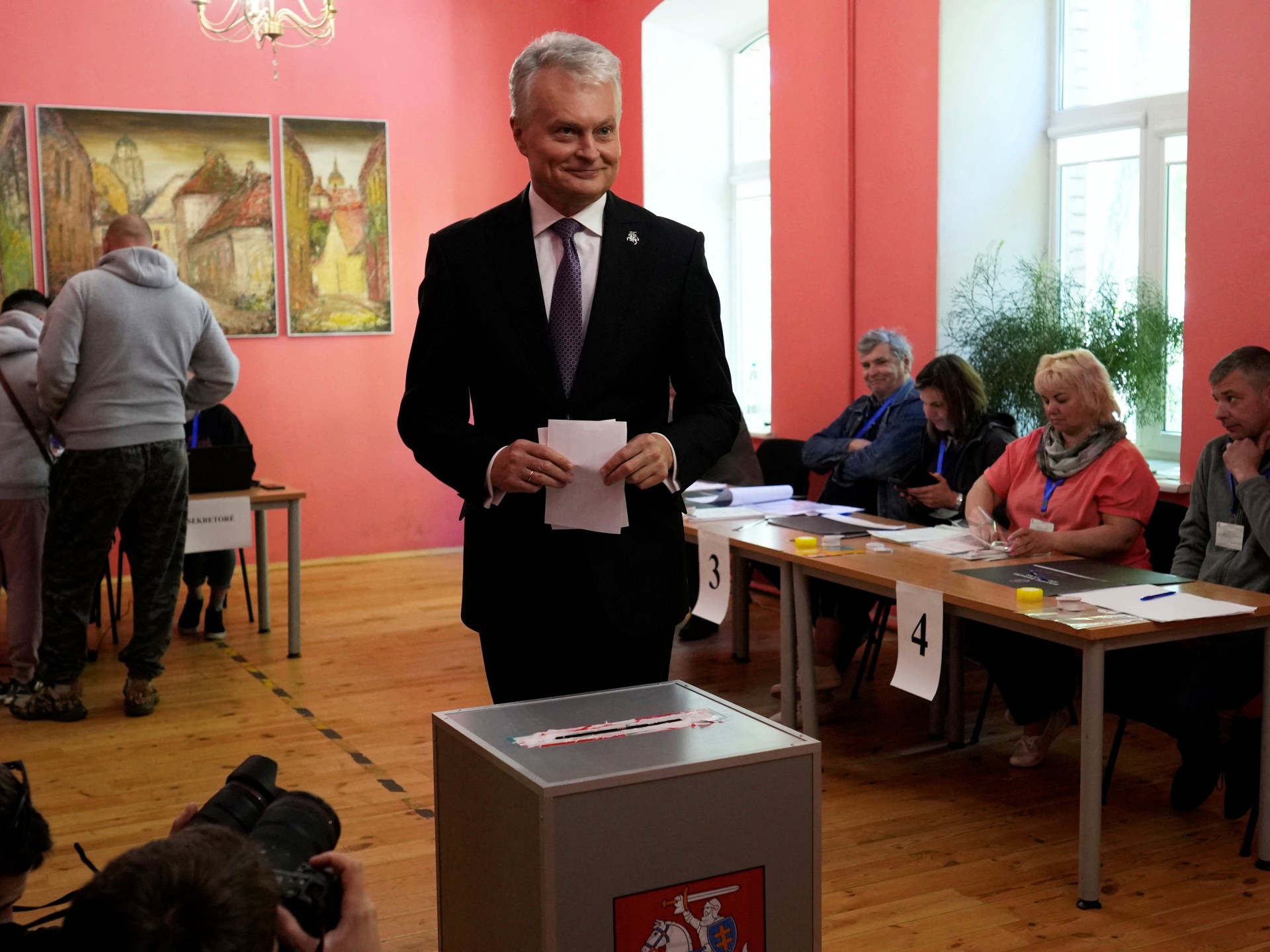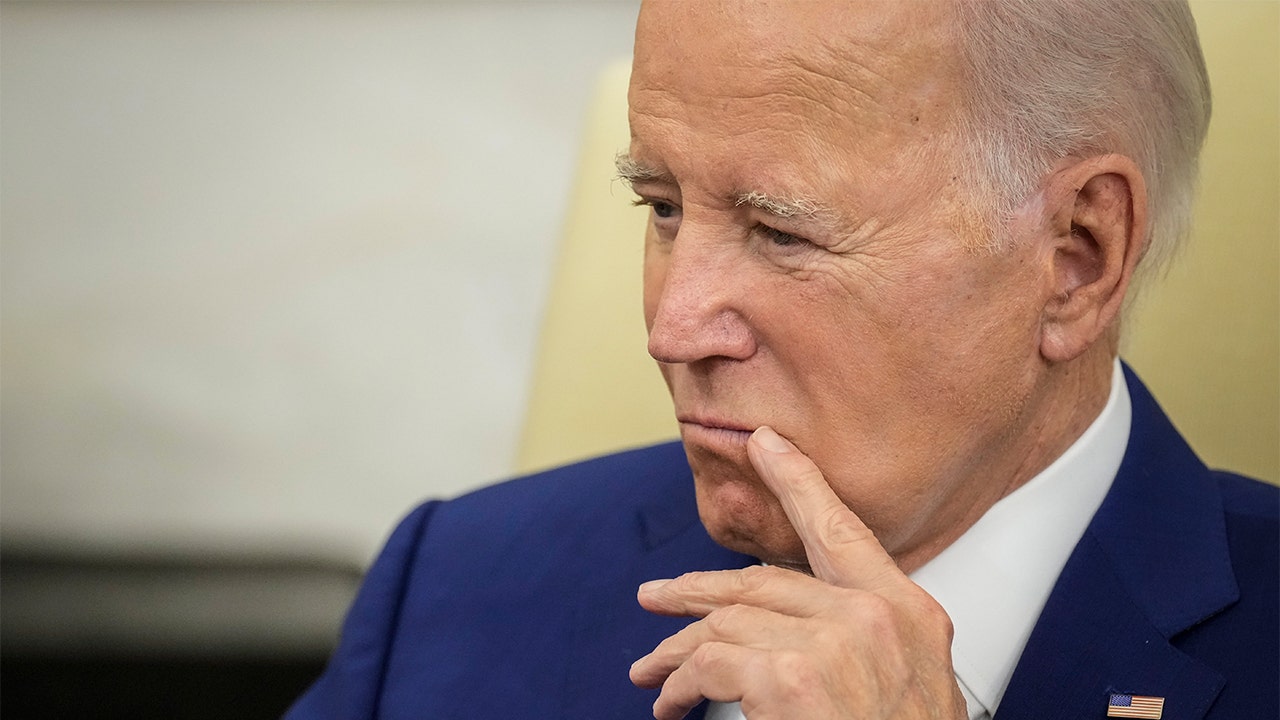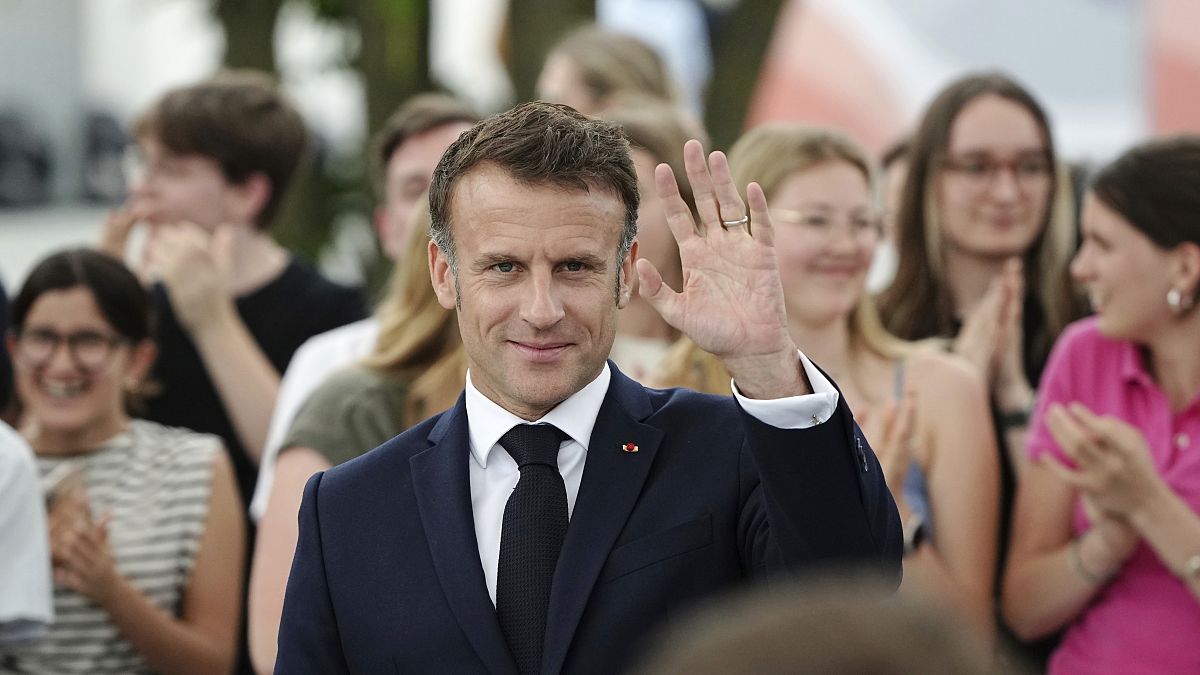Detroit, MI
Photos of new Detroit Tigers City Connect uniforms and what each part symbolizes

DETROIT – The Detroit Tigers have unveiled their new City Connect alternate uniforms.
Photos of uniforms
The uniforms are black with a blue tire tread pattern down the center. You can see photos of Riley Greene, Tarik Skubal, and Spencer Torkelson modeling the jerseys and hats.
When will Tigers wear these?
The Tigers will debut these uniforms at home on May 10 against the Houston Astros. They will wear them for the rest of their Friday home games this season.
Detroit is one of nine teams to unveil City Connect uniforms this season. The goal of the jerseys is to celebrate the history, culture, and spirit of each city.
“We are excited to introduce the Tigers City Connect uniforms and celebrate the past, present, and future of the Motor City,” said Ryan Gustafson, president and CEO of Ilitch Sports and Entertainment.
Gustafson said the uniforms represent Detroit’s combination of muscle and innovation, paying homage to the “city that put the world on wheels.”
“From the tire treads to the VIN tag to the M-1 patch on the sleeve, there are unique features on the uniforms, caps, and batting helmets we feel Tigers fans and Detroiters will appreciate,” Gustafson said.
What elements symbolize
The electric blue tire treads down the middle of the jersey represent “the wheels keeping the Motor City and the Tigers accelerating toward the future,” the release said.
The uniforms celebrate M-1, saying Woodward Avenue “unites neighborhoods, and is a central heartbeat of the city’s pride, progress, and potential.” It also notes that Comerica Park is on Woodward Avenue.
“The 313 patch stitched on the left sleeve of the jersey takes you on a ride to M-1, known to Detroiters as Woodward Avenue, America’s first paved road in 1909,” the release says. “The baseball diamond-shaped patch features Detroit’s ’313′ area code, with the No. 1 bolded and emphasized to emulate the classic M-1 road signs.”
The racing stripes at the bottom of each sleeve celebrate that Detroit has long been at the core of the racing industry and “parallels the Tigers’ youthful speed and energy.”
Like every vehicle, the uniform also has its own unique VIN: 190135456884. It represents the team’s first year of AL membership (1910), and the years of all four World Series championships: 1935, 1945, 1968, and 1984.
The tiger eyes at the belt line of the jersey and under the bill of the cap symbolize the “passion, energy, and tenacity” of the Tigers and Detroiters.
The Tigers will have an electric blue City Connect batting helmet with a similar design as the jersey. “Detroit” is scripted across the front and includes the VIN tag on the right side, with a matte finish.
Ilitch comments
Here’s what the Ilitch Sports release said about the uniforms:
The Tigers City Connect uniforms are an ode to the Motor City, a moniker bestowed upon Detroit in the early 1900s when it became the epicenter of the automotive industry, putting the world on wheels, and driving a significant part of Michigan’s economy. It defines who we are as Detroiters, our unwavering drive, steadfast resiliency, and indomitable spirit. The Motor City represents the pride of its hard-working people and is proudly displayed across the chest of the City Connect jersey.
Along with paying tribute to the remarkable history of the automotive industry in Detroit, the Tigers City Connect uniforms were created with the momentum of the city and its bright future in mind. The innovative and modern design presents a fashionable electric blue and dark navy-blue color combination with several features that will resonate with Detroiters, Michiganders, and Tigers fans everywhere.
Like Detroit and the auto industry, the Tigers hold fast to a storied history of both challenge and triumph. While paying homage to our past, we enthusiastically turn the page toward a future brimming with opportunity. It’s a revitalization in parallel – the resurgence of Detroit, the innovation within the auto industry and the transformation of the Tigers ball club — all converging at a pivotal moment and better than before. The Tigers City Connect illustrates the foresight to shift into a new era of excellence as we drive our forward-thinking, building something special through technology, youthful energy, and optimism.
Standing side-by-side with the people of Detroit and the auto industry, it’s the numbers that prove our Motor City story. Where Michigan is #1 in the nation for automotive manufacturing jobs (6X higher than the national average); accounting for 1.1 million automotive or mobility jobs representing 20% of the state’s workforce; and 21% of all U.S. auto production. Source: Detroit Regional Chamber.
We are Detroit, where innovation meets grit, where excellence meets work, where challenge meets resilience. We look forward through the windshield and no longer in the rear-view mirror. It’s us against everyone. We are Detroit, where muscle meets brains. We are the Motor City.
Ilitch Sports and Entertainment
City Connect block parties
The Tigers and Nike are hosting two City Connect-themed block parties outside Comerica Park.
The first will be from 4 p.m. to 7 p.m. May 10. The second will be from noon to 6:30 p.m. May 11.
These parties will include live music, food and beverage trucks, muralists, and merchandise outlets with City Connect gear.
Copyright 2024 by WDIV ClickOnDetroit – All rights reserved.

Detroit, MI
Don’t Call It a Comeback for Detroit

The Detroit Lions have not won a championship since 1957. That same year, Detroit’s population grew for the last time—until last year. The Lions still haven’t won the Super Bowl, but they’re gaining momentum. And, for the first time since 1957, Detroit’s population is growing.
The increase was modest; the U.S. Census Bureau reported a 1,852-person bump in the Motor City’s ranks. Still, that’s more than can be said for cities like Baltimore, Philadelphia, Chicago, and New Orleans, where populations declined over the same period. Whether Detroit’s growth is a one-off or the beginning of the comeback often forecasted but never imminent, only time will tell. Detroit will have to prove itself capable of overcoming the factors that led to its demise.
Founded by French fur traders and missionaries, Detroit has long been subject to demographic change. The once-small city was a bargaining chip for great powers through the latter half of the 18th century, traded from French to British to American hands, often with incursions from regional Native American tribes. Located along the waterway connecting Lake Huron to Lake Erie, Detroit was well-positioned for the growth of the young nation’s industry.
Over the next century, European immigrants came to Detroit, mostly from Poland, Ireland, and Germany. Unlike residents of most major American cities, Detroit’s citizens lived mainly in single-family homes rather than tenements or row houses—immigrants included. But, as was common, immigrants settled in ethnically homogeneous neighborhoods, giving rise to Poletown, Germantown, and Greektown within the city limits.
When Henry Ford transformed Detroit into Motor City, he hired factory workers from among the city’s immigrant population, attracting labor with the generous $5 workday. But the growth of Ford Motor Company soon outpaced the growth of Detroit’s immigrant population. The automobile industry needed more factory workers, but fewer Europeans were moving to the city due to several restrictive immigration bills in the 1920s. Looking for workers domestically, Ford began hiring black Americans who had moved north in search of work and a reprieve from the Jim Crow South.
Ford’s continued expansion would not just change Detroit economically but demographically, culturally, and geographically. By 1930, Detroit’s black population grew 25-fold to 150,000. Like European immigrants before them, black Americans lived in ethnically homogeneous neighborhoods in the city.
And as both money and workers poured into Detroit, rapid industrialization heightened racial tensions in the city. Searching for available land and lower prices, companies began building new factories on the outskirts of Detroit. And as companies moved out of downtown, so did their employees. A 1932 population survey concluded that “the outward expansion of the city has pushed suburban development farther and farther away from the down-town section. As a result…Detroit is deteriorating within the heart of the city itself.”
But the deterioration was slow—for a while, at least. Detroit residents moved to subdivisions on the city’s outskirts, many of which advertised themselves as havens from the city’s ethnic integration. Some new neighborhoods offered buyers assurance that, “ten years from today, the neighborhood will be just as desirable as it is today,” not so subtly hinting at race occupancy restrictions for the new developments.
Property owners in Detroit were concerned about the same thing. Those who didn’t, or couldn’t afford to, move away became wary of fluctuations in property value. With the financial disaster of the Great Depression still in recent memory, white, working-class homeowners were skeptical of anything that could jeopardize their property value—including racial integration. Where suburban homeowners had recourse to realtors, urban homeowners often took matters into their own hands, heightening racial tensions.
By 1957, more people were leaving Detroit than were moving in, and the black population remained fairly concentrated in central neighborhoods. Then, a decade later, came the summer of rage.
Of the 158 race riots that exploded in cities across America during the summer of 1967, Detroit’s riots were the bloodiest. Over five days, 43 people were injured, 7,2000 arrested, and more than 2,500 buildings were looted or destroyed. Michigan’s governor sent in the
The hemorrhage of white residents to the suburbs turned into abject flight. In 1967, 47,000 people left Detroit, headed for the suburbs. The following year, 80,000 people left. In the next decade, Detroit public schools saw a 74 percent decrease in the number of white students enrolled. Following white flight, Detroit became a majority-black city.
As Detroit’s population plummeted, neighborhoods were abandoned, and once-bustling subdivisions became blighted. Crime spiked, heroin use grew, and gun violence became commonplace. For decades, Detroit went up in flames every Halloween when arsonists torched hundreds of homes on “Devil’s Night,” as it became known.
By the time deindustrialization created the Rust Belt, Detroit had already fallen. Ironically, the very industry that built the city had also served as a vehicle for displacement and inflamed racial conflict.
As the city’s demographics shifted, so too did its politics. Activists looked to profit from stoking racial tensions, like lawyer and black labor organizer Kenneth Cockrel Sr. In one case, Cockrel was able to convince a jury that his defendant — who had taken an M-1 carbine to his shift at a Chrysler plant and killed two foremen and a fellow worker — was “not guilty by reason of insanity as a result of racism and conditions inside the plant.” As Bill McGraw wrote in the Detroit Free Press, “With such unlikely victories, much of white Detroit was incredulous — and angry — that black radicals were overthrowing the old order downtown.”
In 1973, Coleman Young, a former black radical, ran for mayor against police commissioner John Nichols. Young won the election by three points, supported by the majority of black voters but only 10 percent of white voters.
As time went on, white residents weren’t the only ones who left Detroit. From 2000 to 2020, Detroit lost a third of its black population, undergoing the greatest loss of black residents in any American city. In 2010, 82 percent of Detroiters were black—the highest ratio in the nation—compared to 77 percent today.
Detroiters left, but their houses still stood, creating long stretches of neighborhood blight. Houses in the city sold for as little as $100 in 2011. Mayor Mike Duggan has knocked down over 25,000 blighted houses, aiming for a goal of “next to zero” abandoned homes by the end of next year.
Since 2013, when Duggan first ran for mayor, he claimed that Detroit would gain population under his leadership. Whether he can sustain the growth—or ameliorate frustrated Detroiters who accuse investors of racist gentrification—is another question. As small numbers of white residents return to the city, some black Detroiters feel displaced by new commercial and residential investments. Some are still resentful that white flight to the suburbs crippled Detroit’s tax base, throwing the city into decades of poverty and underfunded resources.
But white people certainly aren’t the only ones moving to Detroit. As mayor, Duggan established an office of immigrant affairs headed up by Fayrouz Saad, who was tapped by Governor Gretchen Whitmer to run Michigan’s immigration policy. Saad’s department administers Whitmer’s Newcomer Rental Subsidy program, which provides up to $500 a month in rental assistance for immigrants and refugees in hopes of reversing Michigan’s decline in population. Program applications can be completed in English, Arabic, Dari, Haitian Creole, Kinyarwanda, Pashto, Spanish, and Ukrainian.
Subscribe Today
Get daily emails in your inbox
In the years since white flight, Detroit has experienced a new wave of immigration. Immigrants from Middle Eastern countries have flocked to the region in recent years, giving the Detroit metro area the largest Muslim population in the nation. Dearborn, which lies just outside of the Detroit city limits, recently became America’s first majority-Muslim city.
Inside Detroit, too, Arab-Americans have moved into the neighborhoods founded by European immigrants. For years, Polish-Americans lived in Hamtramck, creating a small enclave of Polish culture. In 2021, however, Hamtramck elected a completely Muslim city council, and Amer Ghalib became the first mayor of Hamtramck in 100 years without Polish heritage.
Demographic change has long been the story of Detroit, but the last seventy years have shown the perils of that change. An increase in population could be the harbinger of urban renewal, though it’s ultimately more likely to bring about heightened ethnic tensions. And if Dearborn and Hamtramck are indicators, the future of Detroit could be shaped less by black-white dynamics and more by the burgeoning conflict between Americans and anti-western values.
Detroit, MI
Electronic music fans celebrate Detroit’s heritage, influence at Movement festival

Detroit — Thousands traveled to the birthplace of techno music Memorial Day weekend to celebrate its Detroit heritage and influence at the Movement Music Festival.
“It’s one of those events that everybody in the city looks forward to every year to kick off the summer here in the city … contributing to the city’s art, culture, and legacy,” said Morin Yousif, a spokesperson for Paxahau, which is producing the event at Hart Plaza in downtown Detroit.
“Day 1 attendance was one of the best we’ve had in recent years, the excitement of the first day along with great weather were major contributors to this,” Yousif said.
The Movement Music Festival is one of the longest-running dance music events in the world, going back to the 2000s.
Micheal Leuffen of Berlin, Germany, was in town for work at Carhartt Work In Progress and decided to get a ticket to stroll around downtown Detroit during the festival. He took a photo of the statue in front of the Coleman A. Young building across the street.
“I’m very much linked to musicians in the city,” he said, adding that he’s been to the festival three times. “I’m coming from Europe, so we have a lot of electronic festivals, DJ-oriented festivals, but I think it’s one of the best in the U.S. and probably the only one where you attract so many people from abroad.
“I know also a lot of people from Germany who are also coming here. It’s really nice for the city as musicians from here say it’s their Christmas. It’s also linked to the heritage of music from Detroit. … And then you have all these little things happening around with new musicians, so it’s not only Movement, it’s the little parties that go around. It’s musically very interesting and true to the world,” said Leuffen, 53.
Kira Lesser, 39, and her partner Tyler Carr brought their young daughter to the festival from Ann Arbor. Carr has been coming to the event for 10 years.
“It’s house music. It’s Detroit. I listen to it. I make it. I used to be a DJ,” Carr said.
Salat Carrillo, 17, and her sister Sabrina, 26, booked a four-day trip to Detroit from Maryland to see their favorite DJ I Hate Models perform Sunday night.
“I think every region always dresses differently. I never been to a festival out here in Michigan. We always stay on the East Coast obviously, so I’m really excited to see what everyone wears,” Sabrina Carrillo said.
mjohnson@detroitnews.com
@_myeshajohnson
Detroit, MI
Detroit Tigers rise early for morning start against Toronto Blue Jays in series finale

The Detroit Tigers were at Comerica Park earlier than usual for Sunday’s series finale against the Toronto Blue Jays.
The final game of the four-game series began at 11:35 as a part of the MLB’s Sunday Leadoff series in partnership with Roku. The nationally televised game is free to watch on Roku and gives baseball fans a fix during brunch.
The early first pitch pushed up roll call for Tigers players, hours earlier than what’s typical for a normal day game beginning just after 1 p.m.. Players arrived to the park with coffee and breakfast in hand, but not everyone was a fan of the uncharacteristic start time.
“I think whoever schedules an 11:30 a.m. game is a big ole stinker,” reliever Andrew Chafin said Sunday, while eating strips of bacon in front of his locker.
Bacon wasn’t the only thing on the menu for Chafin before the game. He decided to treat himself, outside of the coffee that most players had.
“I had a bagel and a Frosted Flake crusted French toast or some boujee stuff,” he said.
Players said the early start didn’t have much of an impact on their sleeping schedules last night, but couldn’t deny the difference in the atmosphere. Catcher Jake Rogers, a self-described morning guy and the first one dressed in uniform for the game, said it was unique.
“I’m here and I’m ready to go,” Rogers said. “It doesn’t really bother me none, but yeah, it’s definitely different.”
Players went through the typical pregame routines, as they would for any other start: stretching, hitting and taking fielding drills while the sun was still rising over the left field wall and scoreboard at Comerica. The pregame warmups, however, were in a slightly condensed window.
“We only have three hours so I’m just going to hit the cage,” infielder Zach McKinstry said.
The Tigers (25-27) had nearly a full day off after Saturday’s 2-1 win in a day game. Detroit is looking to win three out of four to take the series from Toronto (23-28), which would be its first series win at home since the end of April.
The Tigers are off Monday on Memorial Day, before beginning the next series against the Pittsburgh Pirates in a two-game series at home. An added benefit of the early start Sunday is snagging a few extra hours of rest between games in the marathon 162-game season.
“We are getting to the point of the year where any time you can get quote-unquote ‘extended time off’ from the game or away from the field is a good thing,” Chafin said.
City Connect mojo
The Tigers will wear the alternate City Connect uniforms for the third straight game in the series finale. The Tigers snapped a five-game losing streak Friday while donning the new black-and-blue jerseys introduced two weeks ago.
The City Connect uniforms were initially only supposed to be worn for Friday home games, but the 6-2 win Friday prompted manager A.J. Hinch to ask Rogers if he wanted to wear the uniforms again. Rogers said yes, but first had to text Reese Olson, the starting pitcher Saturday, to conduct a poll. As the starting pitcher, it was ultimately Olson’s final call which uniforms the Tigers would wear.
“I texted Reece, and he was like ‘let’s do it’,” Rogers said head-to-toe in uniform. “That was kind of the poll.
“Then I went to A.J. and told him we are wearing it tomorrow and he said okay. Then we won again yesterday and so here we are again.”
The Tigers are now 3-1 in the City Connect uniforms. The uniforms debuted May 10 against the Houston Astros in a 5-2 loss, but have won every game since then. The first win came the following day against Houston in a game where Kerry Carpenter hit two home runs. The next two wins came this weekend against Toronto, where Carpenter homered in each game as well.
Glove catching up to bat: Detroit Tigers’ Kerry Carpenter is a great hitter, and now a reliable outfielder too
Carpenter is out of the lineup Sunday against Toronto left-hander Yusei Kikuchi, on the bench along with other lefties Riley Greene and Colt Keith.
The players are split on whether or not sticking with the jerseys is a superstition inside the clubhouse. On one end of the spectrum, you have Chafin, who said “every damn thing we do is superstitious whether you say it or not” because that’s just second nature in baseball. McKinstry said he doesn’t believe it’s superstition while saying he doesn’t believe in any.
As for Rogers, it may be too early to make a definitive call.
“I think we’re just winning and having fun with it,” the starting catcher said. “Superstition or not, we are winning with them on.”
The decision to go back to the Motor City uniforms for Sunday was an easy one after Saturday’s win. Hinch didn’t want to mess with the team’s newfound mojo after struggling throughout May coming into the series.
“I don’t know if it’s the reason, but we’re not going to test it,” Hinch told reporters after Saturday’s game.
-

 Movie Reviews1 week ago
Movie Reviews1 week agoIs Coppola’s $120M ‘Megalopolis’ ‘bafflingly shallow’ or ‘remarkably sincere’? Critics can’t tell
-

 Crypto1 week ago
Crypto1 week agoVoice of Web3 by Coingape : Showcasing India’s Cryptocurrency Potential
-

 Politics1 week ago
Politics1 week agoTrump predicts 'jacked up' Biden at upcoming debates, blasts Bidenomics in battleground speech
-
/cdn.vox-cdn.com/uploads/chorus_asset/file/24038601/acastro_STK109_microsoft_02.jpg)
/cdn.vox-cdn.com/uploads/chorus_asset/file/24038601/acastro_STK109_microsoft_02.jpg) Technology1 week ago
Technology1 week agoMicrosoft’s Surface AI event: news, rumors, and lots of Qualcomm laptops
-

 News1 week ago
News1 week agoA bloody nose, a last hurrah for friends, and more prom memories you shared with us
-

 News1 week ago
News1 week agoVideo: A Student Protester Facing Disciplinary Action Has ‘No Regrets’
-

 Politics1 week ago
Politics1 week agoAOC, 'baby girl' Marjorie Taylor Greene trade barbs in fiery Garland hearing: 'Are your feelings hurt?'
-

 World7 days ago
World7 days agoPanic in Bishkek: Why were Pakistani students attacked in Kyrgyzstan?


















